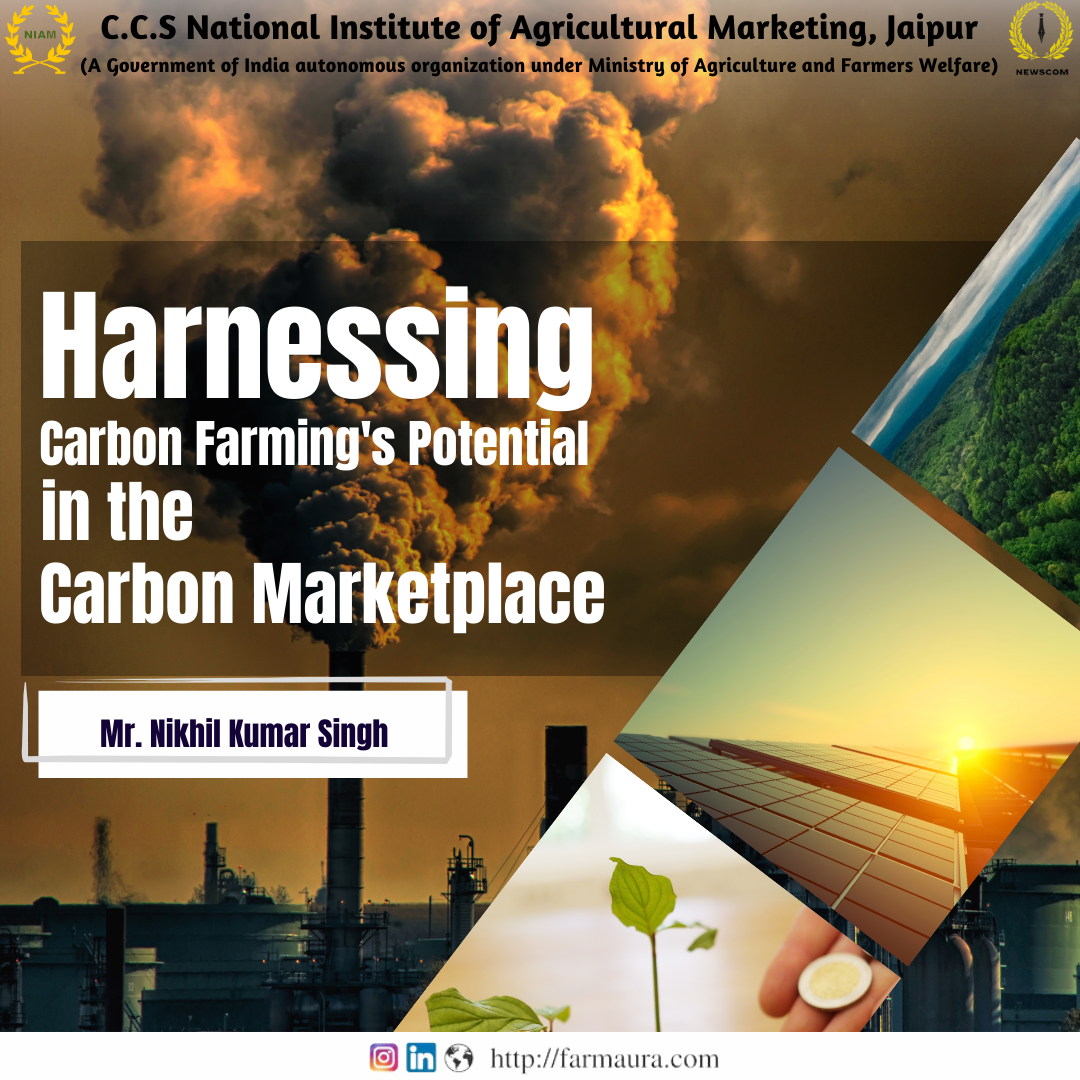In an increasingly climate-conscious world, carbon farming has emerged as a transformative approach that unites agriculture and environmental stewardship. It revolves around the capture and retention of carbon dioxide from the atmosphere, gaining acclaim for its dual advantages: fighting climate change and providing economic prospects for farmers. This article delves into the realm of carbon farming and its harmonious integration with the carbon market, examining how these practices not only diminish greenhouse gas emissions but also serve as a profitable revenue source for farming communities.
Understanding Carbon Farming
Carbon farming is an inventive agricultural strategy that centers on capturing and storing carbon dioxide from the air within the soil, vegetation, and trees. It encompasses an array of methods, including reforestation, afforestation, agroforestry, cover cropping, and reduced tillage. The ultimate objective is to enhance soil vitality, bolster biodiversity, and curb greenhouse gas emissions, primarily carbon dioxide. The carbon sink capacity of the world’s agricultural and degraded soils is 50 to 66% of what it has been historically. This means our soil can hold 42 to 78 gigatons more carbon. Increasing the amount of carbon in soil also makes it more productive for farmers
Carbon Farming and the Carbon Market: A Symbiotic Alliance
Carbon farming transcends mere greening of the planet; it forms a direct nexus with the carbon market, a financial framework devised to incentivize the reduction of carbon emissions. The carbon market operates through the concept of carbon credits, enabling entities like businesses, governments, and individuals to trade these credits as a means of compensating for their own emissions. Here’s how carbon farming intertwines with this framework:
Carbon Offset Credits: Farmers adopting carbon farming practices can generate carbon offset credits, representing the carbon they’ve sequestered. These credits are marketable to companies seeking emission offsets, offering tangible financial incentives for farmers to partake in carbon farming.
Carbon Trading: The carbon market acts as a platform for farmers to engage in carbon trading. As carbon farming practices proliferate, a secondary market has emerged, where carbon credits change hands. Farmers can benefit from the potential appreciation in the value of their credits as the demand for carbon offsets continues to surge
Fostering Sustainable Agriculture: The carbon market promotes the adoption of sustainable agricultural practices aligned with carbon farming. By offering financial incentives for emissions reduction, it motivates farmers to embrace techniques that enhance soil health and carbon sequestration, such as reduced tillage and cover cropping.
Meeting Regulatory Obligations: Certain governments and industries confront emission reduction targets and regulations. By purchasing carbon credits from carbon farming initiatives, they can cost-effectively fulfil their emission reduction requirements.
Benefits of Carbon Farming in the Carbon Market
Climate Change Mitigation: Carbon farming substantially curbs carbon dioxide levels in the atmosphere, playing a pivotal role in mitigating the consequences of climate change, including elevated temperatures and extreme weather events. According to Climate Central is a non-profit news organization 4-5 gigatons carbon dioxide per year sequestration is possible in soils.
Rural Economic Advancement: Carbon farming creates an additional income stream for farmers, particularly valuable for rural communities, diversifying their revenue sources and buttressing long-term economic viability.
Enhanced Soil Health: Carbon farming practices enhance soil health by increasing organic matter, augmenting water retention, and enhancing nutrient availability. Robust soils exhibit greater resilience to drought and erosion, ensuring enduring agricultural productivity.
Preservation of Biodiversity: Afforestation and agroforestry elements within carbon farming foster biodiversity by cultivating wildlife habitats. This contributes to overall ecosystem health and resilience.
Challenges and the Path Forward
Despite its myriad advantages, carbon farming confronts challenges such as the necessity for precise carbon sequestration measurement, equitable allocation of carbon credits, and potential conflicts with food production. To fully unlock its potential, a collaborative effort involving various stakeholders, including governments, corporations, and farmers, is imperative in addressing these hurdles.
Conclusion
The fusion of carbon farming with the carbon market offers a promising avenue to combat climate change and concurrently bolster farming communities. As the world grapples with the pressing demand to reduce greenhouse gas emissions, carbon farming presents a sustainable and economically viable solution that merits widespread recognition, investment, and adoption.




